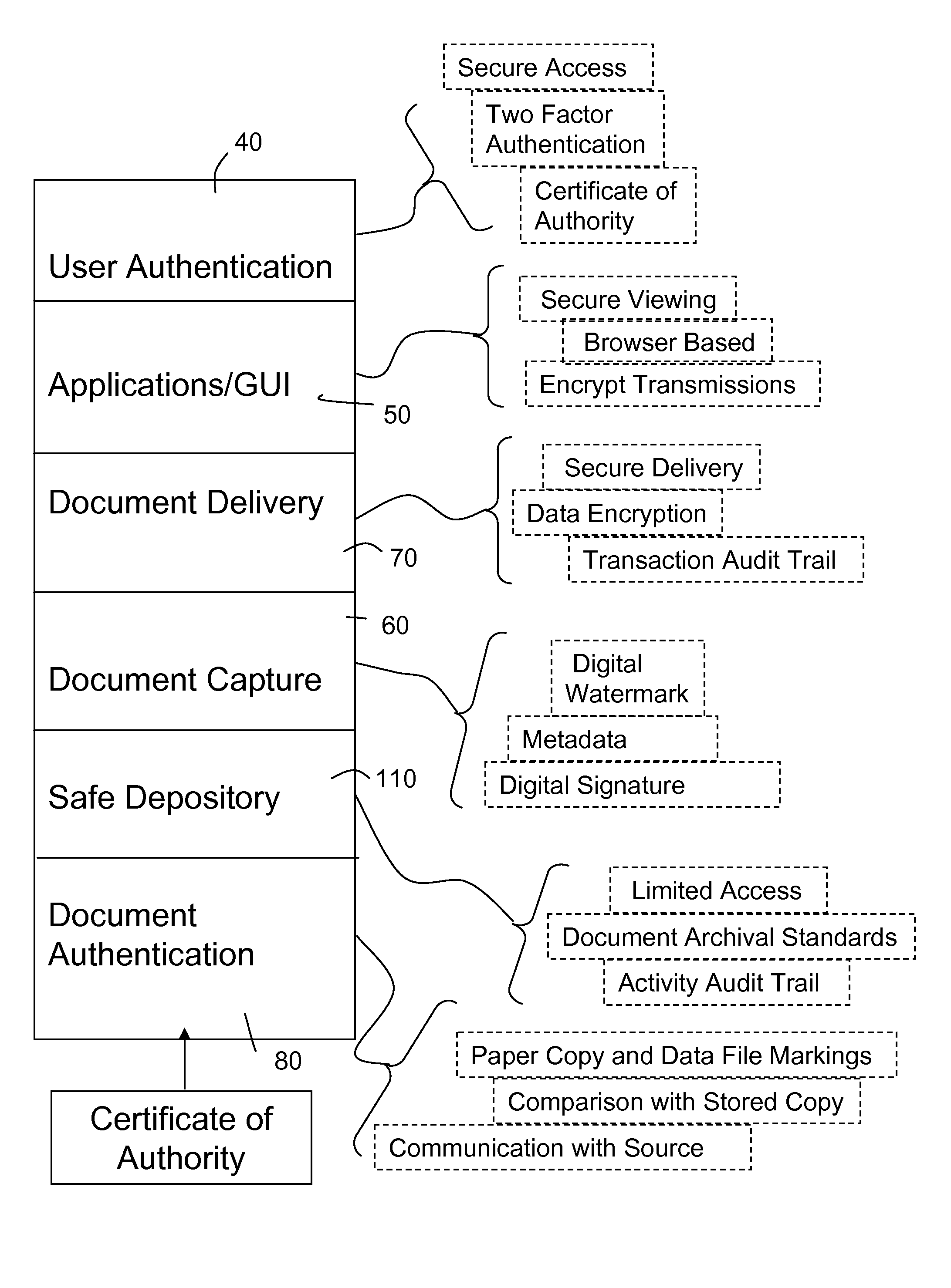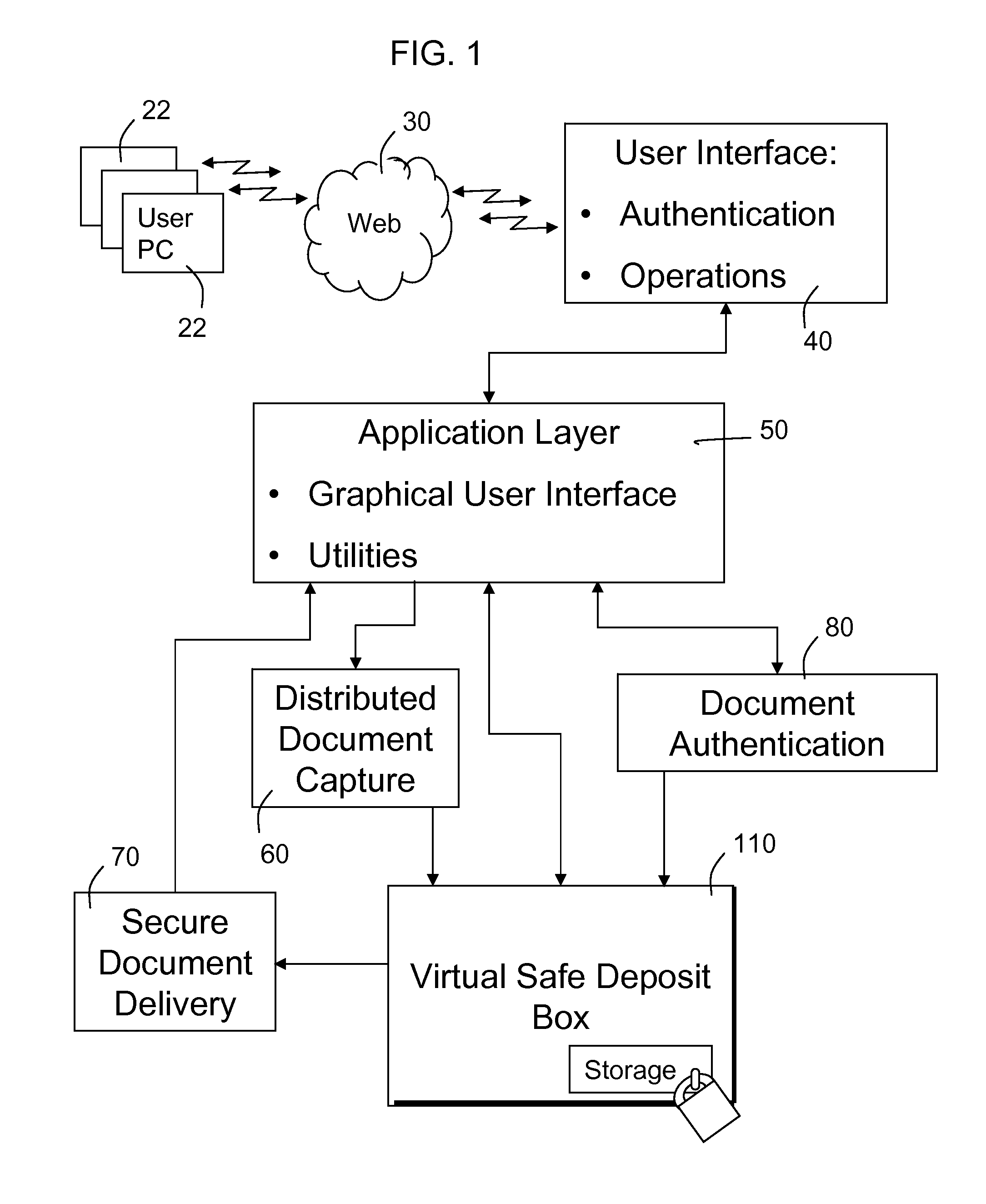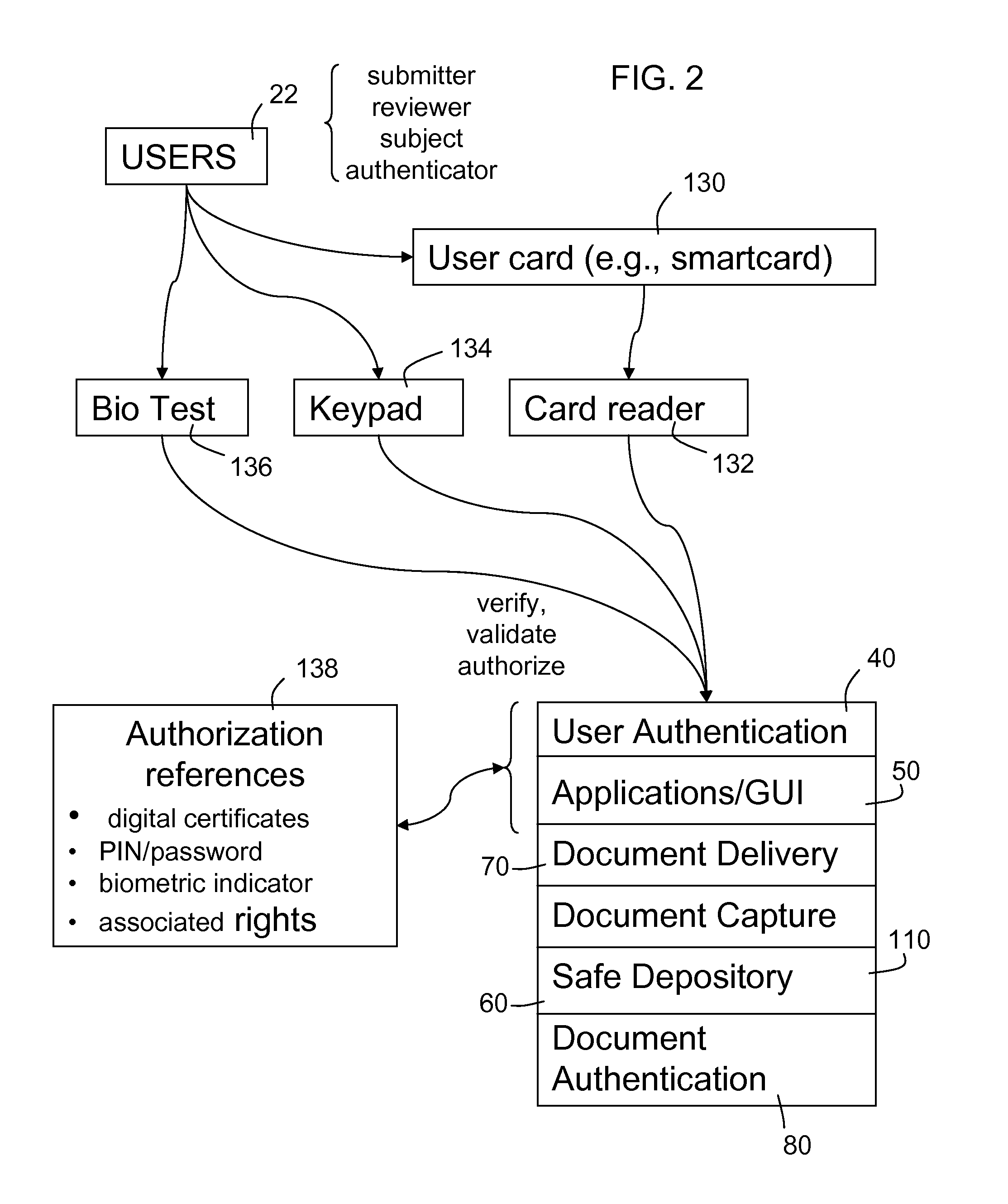These statements often embody identifying information that is associated with the subject to the extent that loss of the document or loss of exclusive custody of the document presents a risk of fraud or
identity theft.
These steps carry uncertainty and risk.
In the case of documents (including not only paper documents, but also information and data) the document (etc.) is important because the information found in the documents is sensitive, the value is embodied by the information contained and a loss can occur if the information becomes known to an unauthorized or dishonest reviewer.
However, documents bearing sensitive information are also valuable, and need to be kept conveniently available for reference in the regular course of business by their subject.
Among other things, access to documents can be limited to certain users or classes of users.
There is no real facility for enabling varying degrees of access to a read-only valued original, or secure passing of files containing important data from one entity to another after establishing authenticity, while organizing access limited to a designated subject and the integrity of the original content.
This again requires access to the original, and risk to the original.
Although this technique protects the original, there is a danger that the copy does not match the original either.
There is also a lack of assurance if various copies exist, as to whether the bearer is the person to whom the document refers.
Furthermore, whether a reviewer is considering an original document or other information carrier, or is considering a copy that is certified to be accurate, there is always a risk that the bearer is not the person to whom the document refers.
Without knowledge of the nature of the
watermark and how it was encoded, it can be difficult to determine whether such a marking is present.
The more sophisticated and highest security identity and document or
data verification techniques and capabilities are generally not available to members of the public as a practical matter.
The risk is on a reviewer who relies on the document.
There is a potential that documents might have been altered, even if the documents comprise correct materials, official seals or other markers.
Without any
system for checking with the person who is the subject or custodian of the document or data, with certainty of that person's identity, one cannot readily establish
authorization.
Without a
system for checking with the issuer of the document or data, again with certainty of the issuer's identity, one cannot be certain of the accuracy of the content.
For documents containing sensitive information, a primary risk is loss of
confidentiality resulting in the sensitive information becoming known to unintended reviewers.
This is not only a problem of custody, because if an unscrupulous person fraudulently identifies himself to a custodian of information, the information may be revealed due to mistaken identification of the reviewer requesting the information.
There are any number of types transactions that have some degree of security risk.
The more valuable of these documents are often the most protected and although that makes them relatively authoritative, they are also quite inaccessible on short notice.
Enlarging capabilities for access to documents bearing identifying data might be expected to increase the danger of unauthorized use and misappropriation of identity information, unwanted disclosure of confidential information, presentation of altered documents in support of fraudulent transactions, damage to the reputation of honest persons whose information is accessed and exploited, and similar risks.
If not found, access is denied.
Alternatively, the collected information can be stored and access limited.
 Login to View More
Login to View More  Login to View More
Login to View More 


